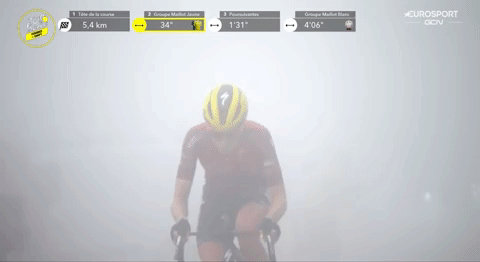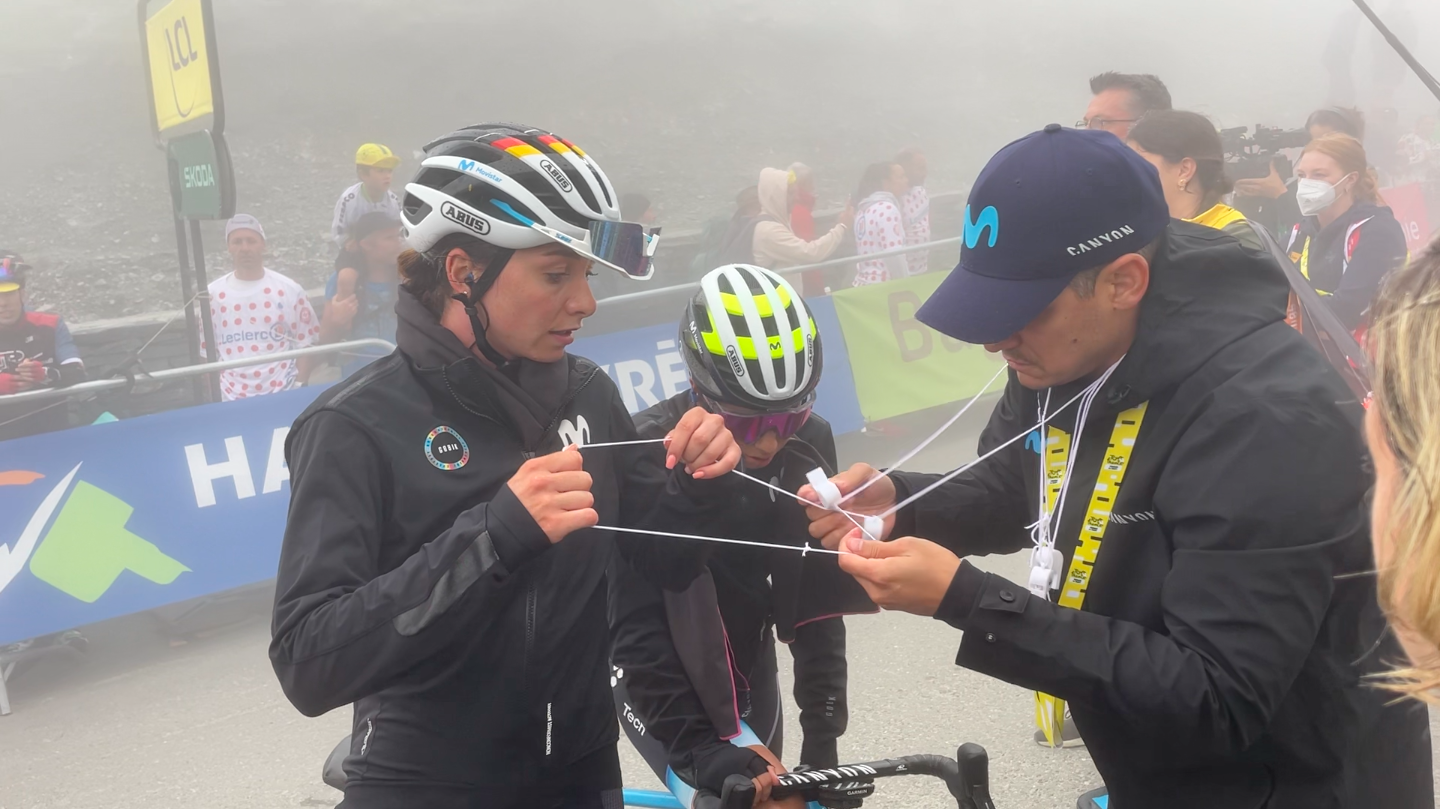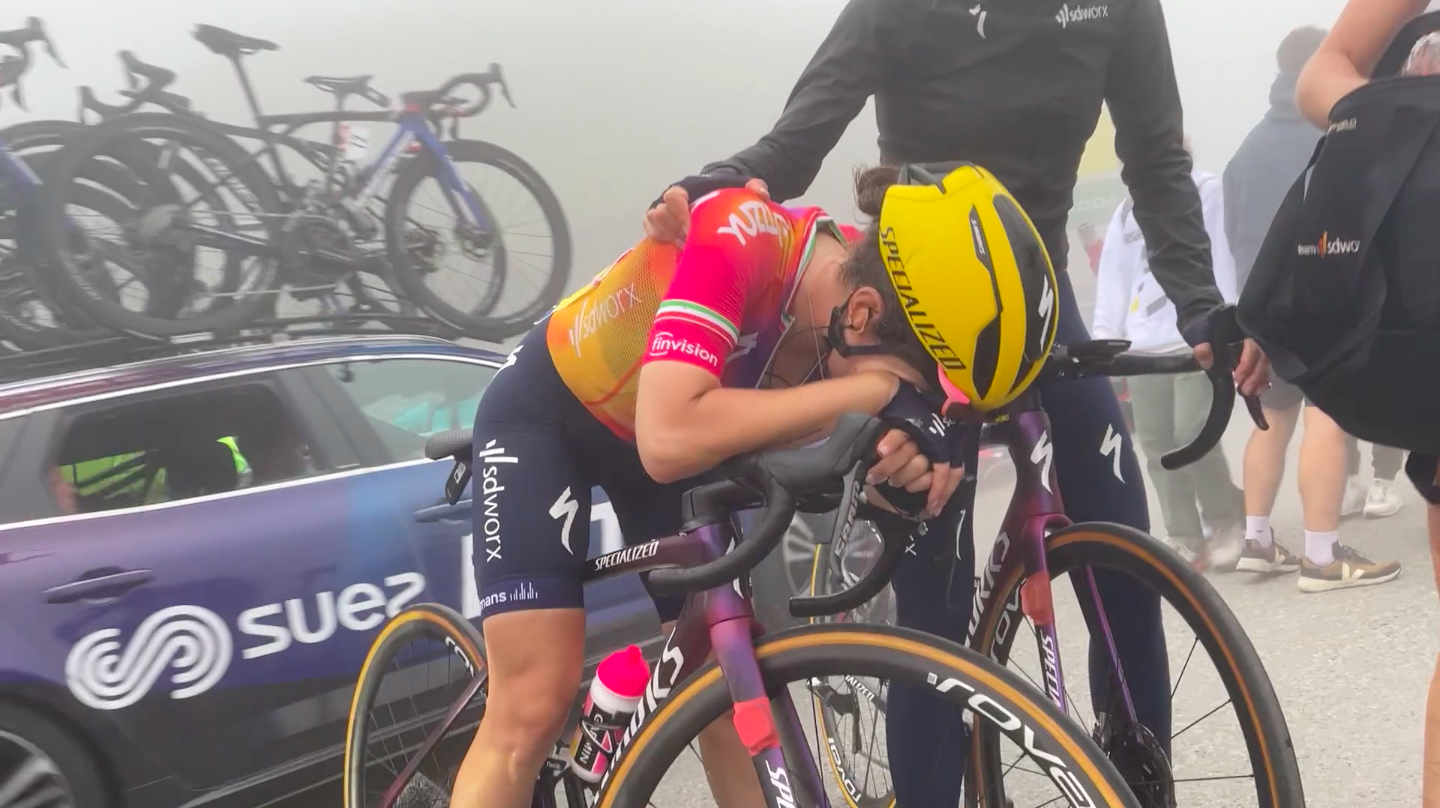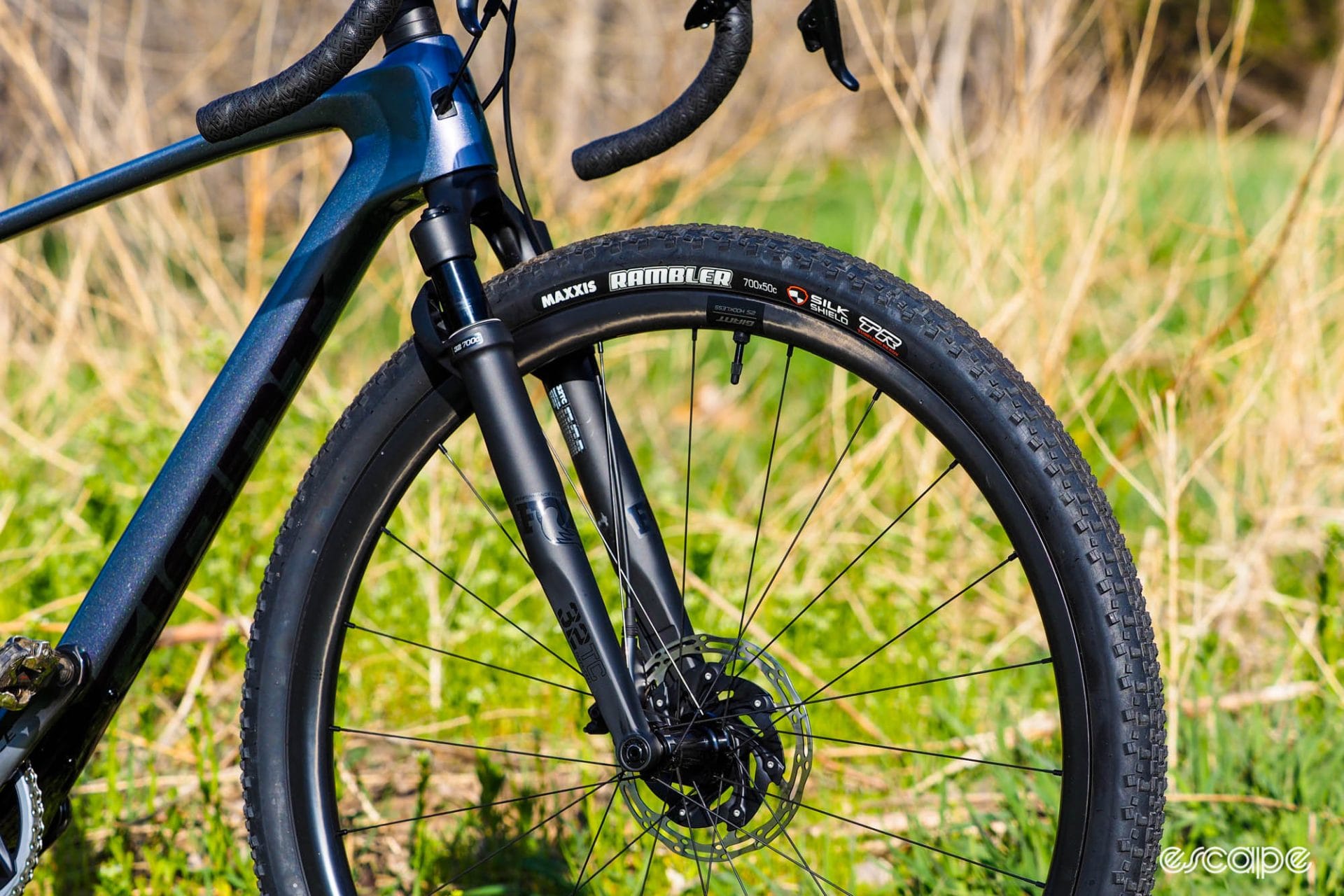It’s chaos atop the Col du Tourmalet. Riders come across the finish line one at a time, emerging slowly from a thick fog. They’re met by race staff who push them up one final rise past the line, out of harm’s way.
Team staff run around trying to find their riders, media personnel run around trying to capture whatever content they can. Car drivers sound their horns as they try to move through the throng; riders blow on whistles around their necks to do the same. Gendarmes yell at anyone out of place, disc brakes squeal.
The queen stage of the Tour de France Femmes avec Zwift has just finished. A little over five kilometres from the finish, as the serpentine climb first poked its head into the clouds, Demi Vollering struck out from an elite lead group, and blew the Tour apart. She quickly dropped all who were with her, including arch-rival Annemiek van Vleuten, then promptly bridged to and passed lone leader Kasia Niewiadoma. And then it was just Vollering and the mist, heading to stage victory on one of cycling’s most legendary climbs.

When she crossed the line, two minutes ahead of Niewiadoma, Vollering was quickly whisked off course, away from the hustle and bustle, to cool down and prepare for her podium protocol. The same for her teammate Lotte Kopecky, who put in the best climb of her life but who will still have to relinquish yellow for green.
Van Vleuten doesn’t have the luxury of a private sanctuary behind the stage when she arrives. The defending champion, third on the day, has been solidly defeated by her younger compatriot.
Clinging to her face are droplets of water from the cloud she’s just ridden through. She finds her team helpers, gets her bike onto a stationary trainer, and starts warming down. She’s surrounded by perhaps the biggest media scrum of the entire week, TV cameras, microphones in her face as she bobs up and down on the trainer. She’s smiling, upbeat, philosophical.
With her cool-down done, and the gathered media satiated, Van Vleuten steps off her trainer. She throws herself into the arms of one in her entourage, sobbing.
With the Col du Tourmalet enveloped in mist, not all riders are so easily able to find their team staff. Some weave in and out of the heaving mass of media and team staff, looking for a familiar face, a familiar jersey. When they do, they can’t yet relax – their race might be done for the day, but another race has begun.
They hustle to get out of drenched kit before the adrenaline wears off; before sweat on skin turns cold. It’s well after 7 pm by now and the cool mountain air is turning cold.
They put warm, dry kit on, stuff towels down their shirts, put leg warmers on. And then they get ready to head back down the way they came.
Liane Lippert arrives, the German champion almost 15 minutes behind Vollering on the day. She finds her people, and hastily begins preparing for her descent. She pulls on a jacket, sticks a towel inside, and grabs a bottle of recovery drink. She goes to set off, to descend through the finish to the team bus, but a team soigneur stops her. He pulls a whistle off from around his neck and hands it to Lippert.
And then she is gone, disappearing back down across the finish line, back into the mist as others continue their battle to the line.

Others take longer than Lippert to get moving. Like stage 5 winner Ricarda Bauernfeind, who sits on the tarmac, completely drained after her 10th-place finish, a team staffer helping her to sit up, rubbing her back. Or Ashleigh Moolman Pasio, who also sits on the ground, her back against a cooler, gulping a recovery drink and staring into the middle distance at nothing in particular.
On the presentation stage past the finish, a familiar fanfare plays and then Vollering is there with arms aloft, being honoured as stage winner. She’ll soon be back up to receive the yellow jersey for the first time in her career. Mist swirls around the stage, making it hard to see from even a few metres away.
On the road below Vollering, riders are still arriving. Like her loyal lieutenant Elena Cecchini, who crosses the line exactly half an hour after Vollering. She rolls to a stop some 50 metres past the line, and drops her head to her handlebars, crying. Marlen Reusser is on the scene immediately, offering words of support and a couple of heartfelt hugs.
We see the headlights of the broom wagon before we see Charlotte Kool. Eventually, the Dutch sprinter comes into view and stops mere metres past the line. As the whistles of descending riders pierce the air, Kool slumps over her handlebars, completely empty. She’s the last rider across the line and has missed the time cut by almost two minutes. A frustrating Tour has come to a frustrating end.
With the broom wagon through, and all riders accounted for, a new kind of chaos descends on the Tourmalet – the road is now open to the public. Professional riders mix with amateur riders mix with team cars mix with media vehicles. All are trying to get off the mountain as quickly as they can.
It’s been a memorable day on the Tourmalet; a day in which Vollering has made the race her own. But the day is not yet done. There are stories to be written, massages to be had, one final stage of the Tour to prepare for.
Did we do a good job with this story?



